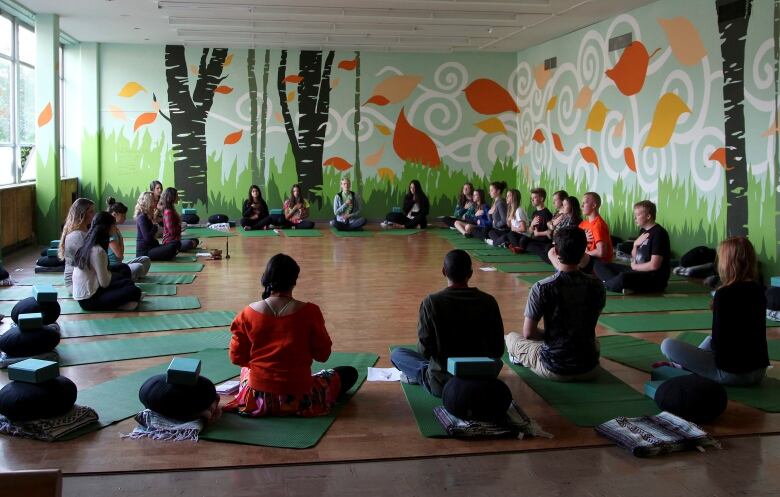Mindfulness meditation moves into the classroom

Mindfulness is nothing new. It's based on Buddhist meditations and breathing exercises that are centuries old, but it's definitely having a moment in the Zeitgeist.
Once you start looking, you'll find mindfulness courses everywhere, bestselling books, and apps. Organizations from Google to the US Marines are offering classes for their members.
And now, it's also showing up increasingly in classrooms, with the practice making its way into the curriculum at more and more Canadian schools.
But raising consciousness in the classroom has led to raised eyebrows from some parents.
It's religious because it is teaching students a practice that Buddhist monks use. But because they have taken the robes off and they're in the classroom, they're calling it non-religious. There seems to be a double standard of religious practices in public schools. As long as you call it "brain breaks" or "neuroscience" and you don't call it Buddhism, it seems to be allowed. If someone were to stand up and lead the students in the Lord's Prayer, but they said that it wasn't Christianity, people would be up in arms about that.- Tina Oleson, a teacher who used to work in the BC public school system
We speak to The Current's own Peter Mitton to go deep into the mind and world of mindfulness.

Do you think mindfulness has a place in the classroom? Share your thoughts with us on Twitter @TheCurrentCBC, Facebook, or by email.
This segment was produced by The Current's Peter Mitton.
RELATED LINKS
Mindfulness study to track effect of meditation on 7,000 teenagers - The Guardian
The Mindful Edge: Stress Reduction and Life Strategies for Teens - Mindfulness Everyday
MindUP™ Program - The Hawn Foundation